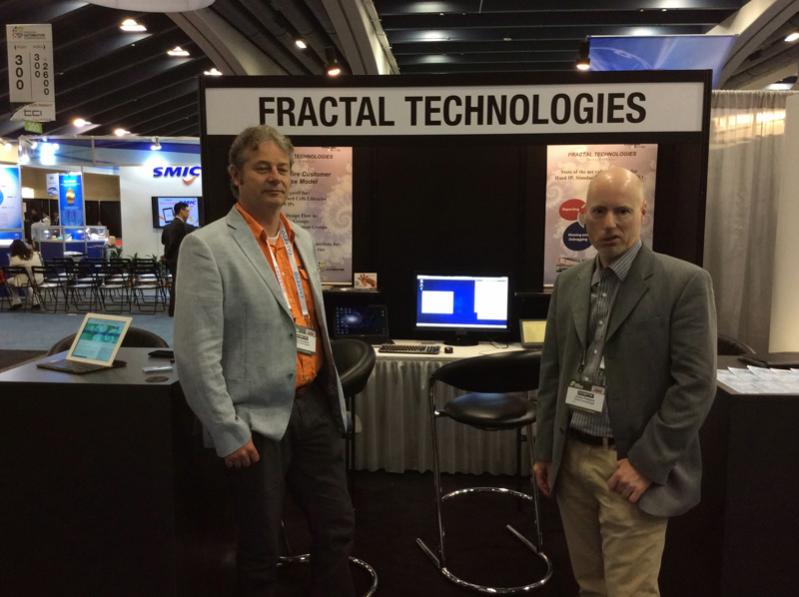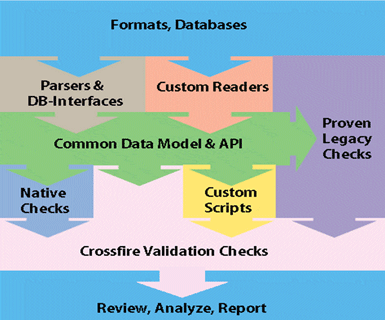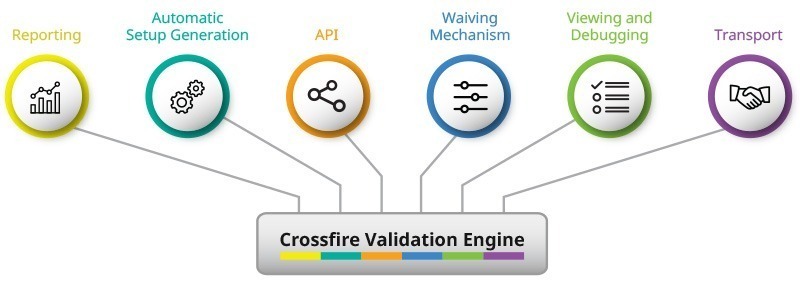Every SoC team uses libraries of cells to get their new product to market quicker: Standard Cells, IO Cells and Hard IP blocks. One immediate question that comes to my mind is, “How clean are these cells?” Validating your cell libraries first makes sense, and will ensure that there are fewer surprises as your chip gets closer to tape-out time. At DAC this year I stopped by the booth of Fractal Technologiesand had a conversation with founders Rene Donkers and Johan Peeters to get an update on their EDA business.

Q: How is the DAC show going for you, and what other conferences do you attend?
This is our 3rd year at DAC now. We’ve also gone to ChipEx, and sometimes the DATE conference (although it’s more of a academic conference).
Q: How is business, and are you growing?
We are a privately held company and are growing. We’ve added an AE, plus two new developers this last year. Currently we are looking to add a new AE for the West Coast, contact Rene for details.
One of the top 10 semiconductor companies is a customer, and 4 more are under evaluation now.
Finding new prospects each day at DAC has been good for us, it’s a narrowly defined market.
Q: How often do you release your Crossfire software?
About releases this year, we have weekly fixes and new features to a specific user, then monthly releases to all users. In Beta now there’s an ability to parse all of the formats that need checking in Parallel (which speeds up the time to read in and analyze) – all customers on maintenance will receive that new feature
At v4.2.1. now and v4.2.2 will have that parallel checking feature in production.
Regression tests include about 3,000 tests on user data and features to ensure the quality.

Q: How has the number of library checks increased since you first started the company?
One big difference in CrossFire checks is that originally there were 70 checks and now it’s up to 200 this year (150 last year). Users can write their own checks, or they can tell Fractal about it and then that check can be added to the standard supported list of checks.
Q: Where are most of your customers located?
Most of our customers are in the USA, then second place is China, third is Europe.
Q: How do engineers evaluate your EDA software?
A typical product demo takes about an hour, then we can talk about an evaluation, you install the software, we have a 90 minute Webex meeting, then you start using the tool. It’s pretty easy to start an evaluation, followed up by talks with an AE about running specific checks, no real need for an on-site meeting because Webex works out best.
A customer since 2010 visited the booth this week, and meet our company in person for the first time, so our support by phone and email has been sufficient to keep them quite happy. We visit the valley twice per year for customer visits to get feedback on how they use the tool, and learn what their new challenges are.
Q: What’s new at Fractal this year?
Well, we have a newly designed web site in 2014, and have added 50 new checks since the last DAC.
Q: How is your software licensed?
All of our license are Time Based License, and most are at three year terms.
Q: How large a job is it to verify libraries these days?
There’s more time required to read in and verify a CCS file at .5GB, but now file sizes of 10GB are common. Customers have 600 .LIB files, so it takes more CPU effort to read and validate all of these cells. With more PVT corners there are more checks that need to be run and validated for correctness. If you have 600 CCS files, then you can parallelize them and get finished much sooner.
Q: Who uses your tool?
Cell characterization engineers use this CrossFire validation tool quite often. If IP blocks do not conform to quality checks, then they can make the entire SoC design fail.
Q: Are there other approaches to cell validation?
Competition to Crossfire is really custom-crafted, in-house tools. Fractal tools are vendor independent, and you don’t need to code your own rules. In-house checking takes a lot of effort to keep updated.
Q: Does Crossfire only validate cells designed by one EDA vendor?
Our tools are data-centric, and we don’t care how the cells were created. We don’t care if Synopsys or Cadence updates their tool versions, because we just read the industry standard file formats.
Si2 defines LEF/DEF other standard file formats, so that updates infrequently and within a week or so Fractal is ready. We can auto-detect LEF/DEF versions from 5.8 back to version 4.1, so you’re covered about what’s mandatory or obsolete.
Some customers have tried to write their own cell parsers, but they find it’s easier to use CrossFire because it already supports parsing for all the file formats being used.
lang: en_US
Share this post via:






Comments
There are no comments yet.
You must register or log in to view/post comments.